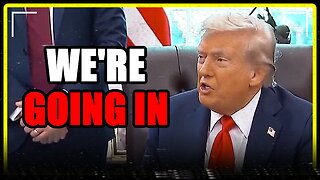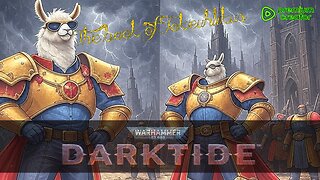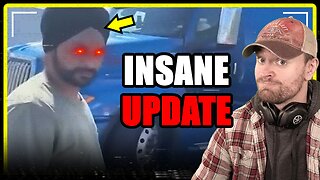Premium Only Content

Nanodrills, NanoPens deliver optical nanobots to drill into the cell
Nanorobots actuated by light, magnetic fields, 3D ultrasound. Professor Peer Fischer directs the Micro Nano and Molecular Systems Lab at Max Plack Institute for Intelligent Systems @ University Stuttgart, Germany
Optics algorithm - expert witness as developed sound, ultrasound, and light to create a gas bubble and can turn on or off the nanorobot using wireless micromanipulation.
Original video https://youtu.be/cIssmyO_-fI?si=S8XzVjp2F2IRJLvV
• 27:00 penetration gene delivery to the retina
o Use a magnetic force found by Tian Qiu + collagen and use type II fields <500nm and forms a thin film
o Use heat on a material that forms a gas plume and forms a thin film (Ebcam to create heat to create gas)
o Nanodrill designed the size of bacteria is 1 billion per sq cm to transfer to a solution and move them.
o 32:10 Use fluorinated compounds coded with a liquid layer – perfluorocarbon
o 33:05 swarm – a wireless transporter using Ferromagenetic FePT super magnets, add platinum, nickel using Vincent Kadiri w G Shutz technology
o 34:57 deliver in the cell – optical nanobots to drill into cell using three methods
Magnetofection – using a magnet particle increases magnetic time
Sonoporation
Electroporation – both of these methods rupture the membrane using an electrical field
o Optical teaser 2018 Pulitzer Prize Athur Ashkin used >200C heat plasmonic particle
o Nanopen – a 500 nanometer rod oxide made of aluminum and gold that couples molecules to get and tweeze into the cell. Move the laser beam by infrared trapping beam
o Red laser manipulates nano-pen with minimal heating
o Coat with fluorescent particle – red for positioning and green for injection
o Causes a bubble, it bursts, ruptures the cells membrane. The tip heats but the rod stays cool and is reusable.
o Light driven controls.
-
 8:19
8:19
MattMorseTV
9 hours ago $0.26 earnedTrump is ACTUALLY DOING IT.
28.9K33 -

ZWOGs
12 hours ago🔴LIVE IN 1440p! - Tarkov w/ Casey & crgoodw1n, Kingdom Come Deliverance, & More - Come Hang Out!
26.4K5 -
 2:30:56
2:30:56
We Like Shooting
16 hours ago $0.03 earnedWe Like Shooting 625 (Gun Podcast)
19.9K1 -
 1:45:02
1:45:02
Glenn Greenwald
7 hours agoIsrael Slaughters More Journalists, Hiding War Crimes; Trump's Unconstitutional Flag Burning Ban; Glenn Takes Your Questions | SYSTEM UPDATE #504
125K152 -
 1:29:31
1:29:31
Killerperk
3 hours ago $0.36 earnedRoad to BF6. Come hang out #regiment #bf6
26.2K2 -
 LIVE
LIVE
Jokeuhl Gaming and Chat
4 hours agoDARKTIDE - Warhammer 40k w/ Nubes Bloobs and AoA
47 watching -
 LIVE
LIVE
Cripiechuccles
5 hours ago😁💚💙MOTA MONDAY WITH CRIPIE💚💙 👌SMOKING, GAMING & WATCHING FLICKS!:😁
35 watching -
 36:11
36:11
Stephen Gardner
4 hours ago🔥'Burn ALL TRUMP FLAGS’ says Tim Walz + Democrat CAUGHT rigging own election!
23.1K12 -
 10:10
10:10
robbijan
1 day agoHollywood’s Hidden Messages: Predictive Programming & What’s Next
17.3K18 -
 40:13
40:13
MattMorseTV
6 hours ago $0.45 earned🔴It's EVEN WORSE than we thought...🔴
31.7K77